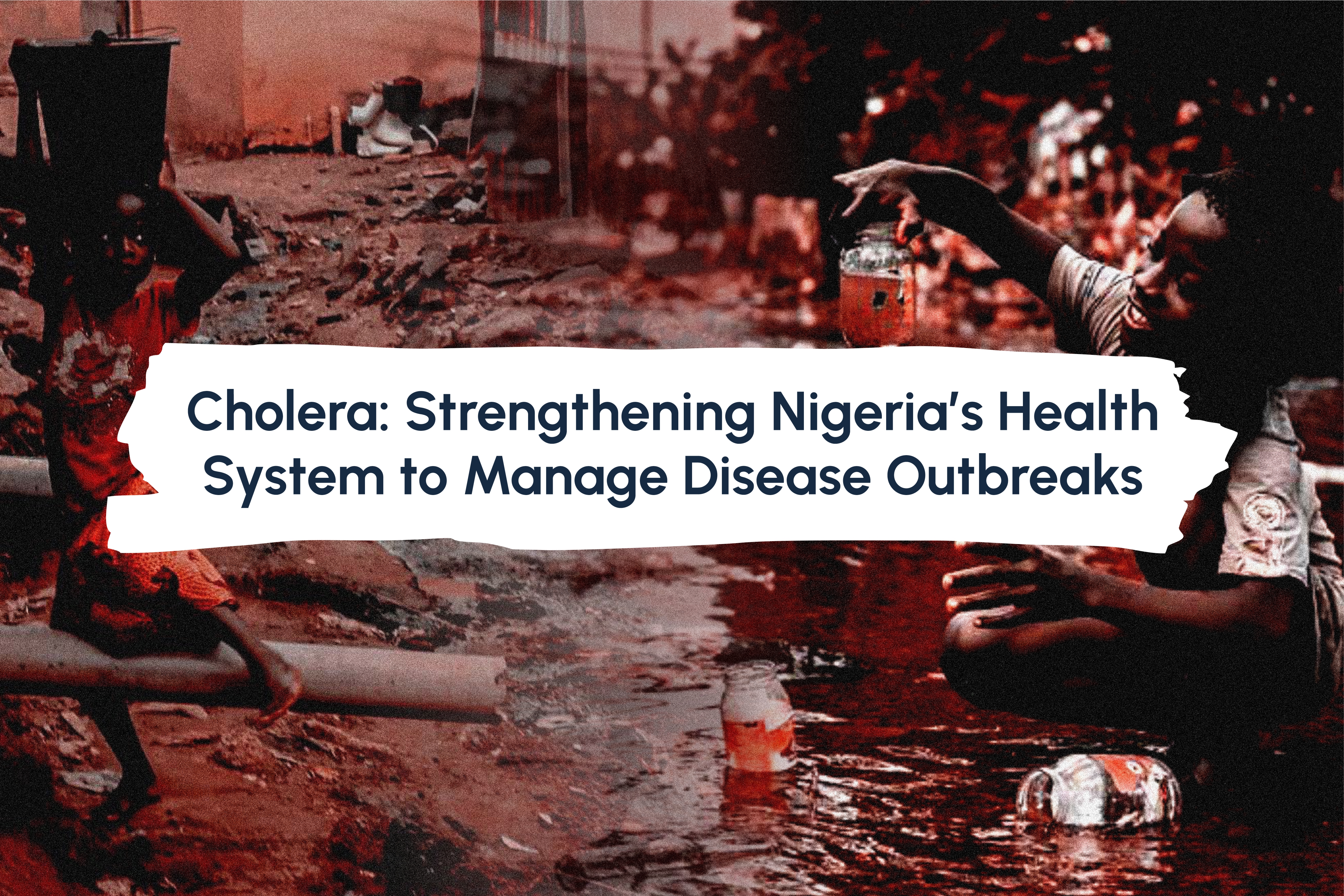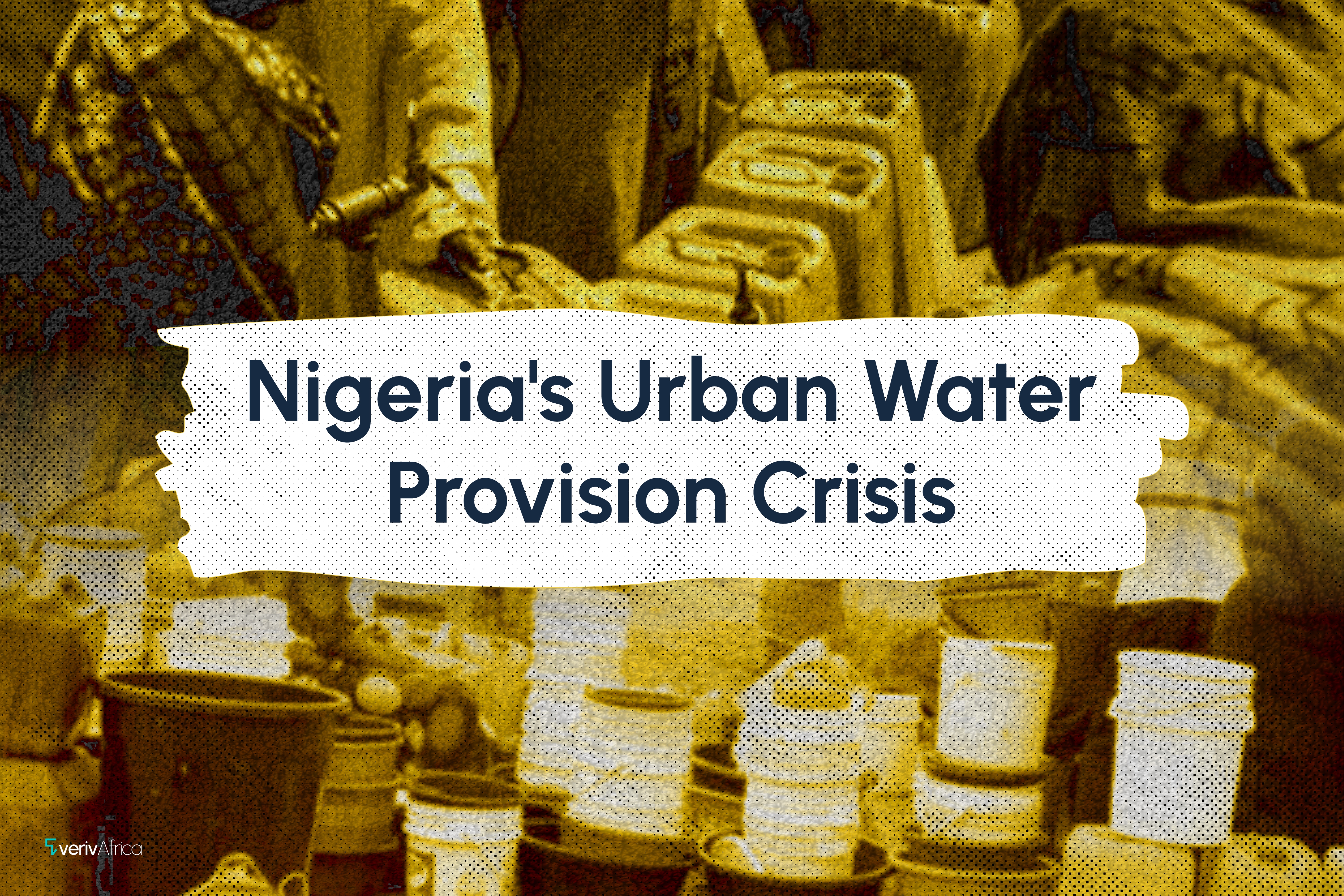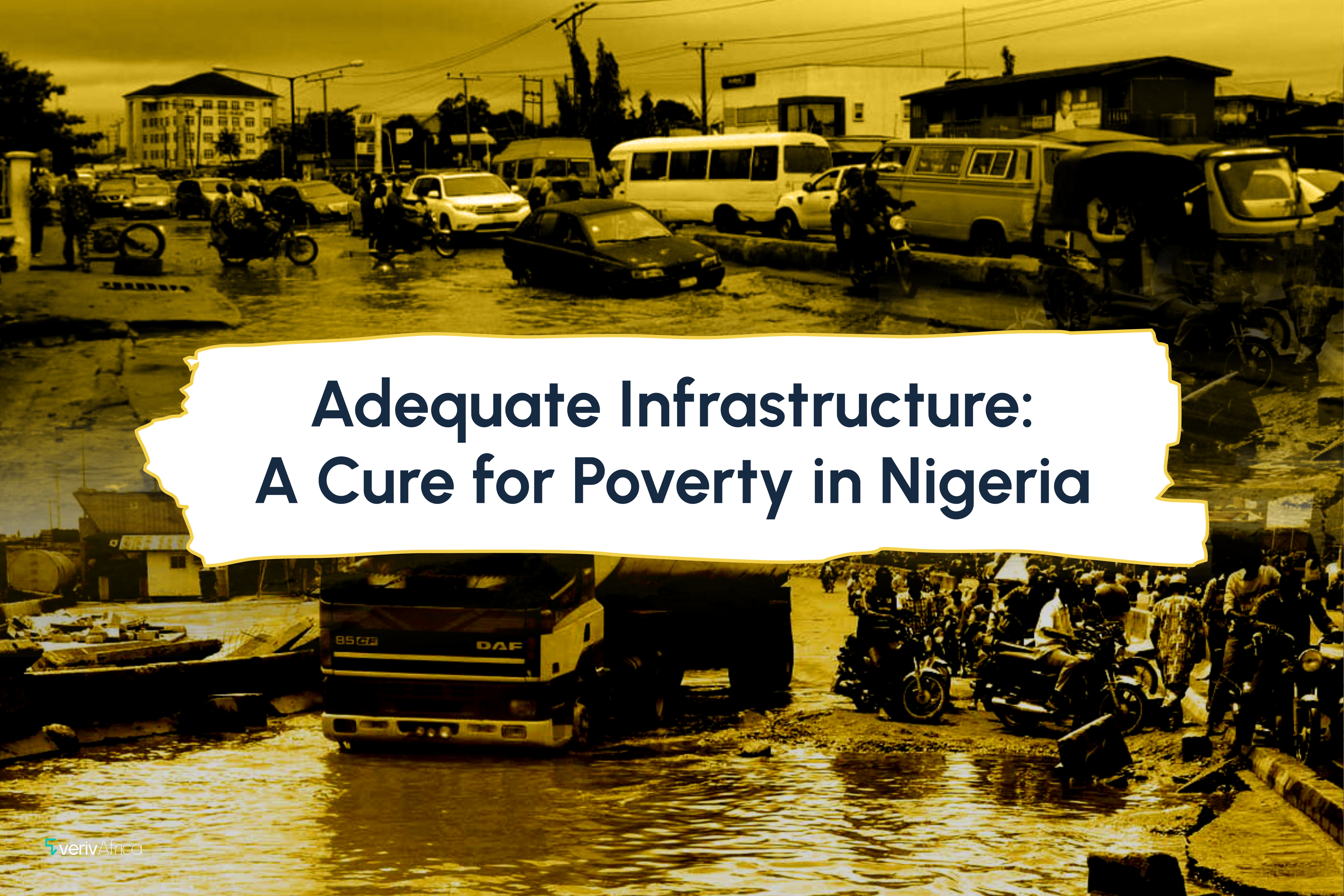Cholera: Strengthening Nigeria’s Health System to Manage Disease Outbreaks

Nigeria’s healthcare infrastructure is currently battling a cholera outbreak it is unprepared for. This dire situation is exacerbated by the lack of access to proper latrine services, a significant deterrent to the spread of the disease. According to the Cholera Situation Report of the Nigeria Centre for Disease Control and Prevention 2024, Nigeria recorded 4809 cholera cases (as of Epidemiological Week 29), with 156 suspected casualties. These numbers represent a fatality ratio of 3.2% from 35 states so far, a result of poor primary healthcare planning at the grassroots level.
According to the NCDC, Lagos State, Nigeria's commercial capital, has presented 65% of cases (3,126), followed by Bayelsa at 10%. Meanwhile, the top five cases per local government data are all in Lagos, with Lagos Island (496), Lagos Mainland (465), and Eti-Osa local governments (334) reporting the three highest cases in Nigeria so far.
Cholera is an infection of the small intestine by the bacteria Vibrio cholera. This water-borne disease spreads rapidly in communities lacking clean water and proper sanitation. Without adequate attention, it can kill within hours. The disease is transmitted through ingesting contaminated water or food and open defecation, which increases the risk of human waste contaminating water sources. When people defecate in open areas, pathogens from faeces easily enter rivers, lakes, or other water bodies used for drinking, cooking, or bathing.
Nigeria’s Response: Vaccines and an End to Open Defecation by 2025
The Nigerian government’s response to the outbreak has featured a series of hotspot monitoring, a bold end to open defecation, and vaccinations in the disease outbreak hotspots. On August 1, 2024, Nigeria's coordinating Minister of Health and Social Welfare, Prof. Ali Pate, revealed that the Ministry of Health expects cholera vaccines to handle the outbreak.
Vice-President Kashim Shettima inaugurated Nigeria's cholera committee on July 4, 2024. Called the “Clean Nigeria: Use the Toilet Campaign,” it has a mandate to end open defecation by 2025. By ending open defecation, Nigeria can significantly reduce the risk of faecal contamination in water sources, improve overall sanitation, and reduce the spread of waterborne diseases like cholera. However, this requires not only doing things differently but also a total commitment by government officials to state capacity in primary healthcare.
Lessons from Vietnam and Brazil
Solving Nigeria’s cholera problems requires methods and models from countries with characteristics similar to Nigeria's population, ecology, and weather. Countries like Brazil and Vietnam have eradicated the disease through solid investments in latrine services and primary healthcare.
According to the World Health Organization, in 1991, Nigeria recorded a 12.87% cholera fatality rate, Brazil reported 1.57%, and Vietnam reported a case fatality ratio of 1.92%. As of 2010, Nigeria, despite reducing the case fatality rate of cholera, still struggled with a fatality ratio of 3.85%, as Vietnam and Brazil reduced fatality rates to 0%. At the time, Nigeria recorded 1712 reported deaths from cholera, while Brazil and Vietnam reported none. Brazil and Vietnam's success happened through deliberate economic inclusion, infrastructure projects to enable rural hygiene and a primary health service that enabled first aid response, reducing deaths and hospitalisation rates—models for Nigeria to adopt.
Vietnam's success in fighting cholera can also be attributed to its World Bank-funded Rural Water Supply and Sanitation under the National Target Program.
In its 2022 update report for the scheme, the World Bank reported disbursing $202.6 million. They also noted that despite Vietnam's impressive record of inclusive economic growth over two decades, poverty remained concentrated in rural areas. Even though rural access to water and sanitation improved alongside economic growth, the country faced challenges regarding the sustainability of initiatives providing water services and hygiene.
This announcement led to the government updating its National Rural Clean Water Supply and Sanitation Strategy in 2011 by strengthening community participation, demand-responsive approaches, and cost recovery. According to the World Bank report, they did this by implementing the third phase of the National Target.
The World Bank program was the first operation in Vietnam and the Water Global Practice to adopt the P for R financial instrument. This instrument introduced a results-based approach to funding allocations and disbursements. The RWSS programme in Vietnam successfully increased rural sanitation investments. Among households, 142,280 improved household sanitary latrines were newly constructed, exceeding the target of 130,000 latrines (109 percent of the target). 1,559 clean water supply and hygienic sanitation facilities were built and used in public buildings such as schools and health centers, exceeding the target of 1,440 facilities (108 percent of the target).
Vietnam’s sustainability of sanitation facilities in public buildings was measured by the number of communes where schools and health centers maintained hygienic status for two years after the sanitation facilities were put into use. According to the World Bank, 179 communes achieved the actual results, exceeding the target of 150 communes (119 percent of the target).
In Latin America, Brazil offers primary healthcare models that Nigeria could adopt as a proactive measure for the fight against cholera and other diseases. Nigeria can adopt the Brazilian Family Health Strategy (FHS) launched in the 1990s, which focuses on using community health workers (CHWs) or frontline public health workers to provide care cost-effectively.
According to the Commonwealth Fund, community healthcare workers are often members of the communities in which they work and have valuable knowledge and relationships. Brazil’s family health strategy started providing primary care in 1994. It aims to provide preventive and primary health care using multidisciplinary professional teams, usually consisting of a physician, a nurse, and about six CHWs. A dental team may also support the health workers. Each group of four or five health teams comprises psychologists, community pharmacists, and physiotherapists and is assigned an area covering 4,000 people, with a maximum of 150 families per CHW.
Brazil boasts more than 265,000 community healthcare workers, serving 67% of its population. These workers are recruited from their local communities, and secondary education is a requirement. This move has led to Brazil recording 17 cholera deaths in 2000 compared to none today.
Economic Inclusion as a Health Strategy
Following Vietnam and Brazil’s success in dealing with cholera, Nigeria can learn the following:
Lowering infant mortality was promoted alongside economic and human development policies, eradicating cholera in these countries, especially Vietnam. This has led to increased exports, a diversified economy, and growing GDP per capita, areas that Nigeria lacks.
As of 2000, Nigeria boasted a larger GDP per capita and exports than Vietnam. By 2021, Vietnam's exports were over five times Nigeria's, and its GDP per capita had surpassed Nigeria's. Vietnam also reduced its cholera fatality rate to 0%.
Vietnam's growth was accompanied by economic inclusion programmes such as the World Bank-funded Rural Water Supply and Sanitation under (Vietnam’s) National Target Program(RWSS), which enabled improved rural and urban sanitation and also enabled the Southeast Asian nation to eradicate cholera, a disease Nigeria still battles today.
Billion)" aria-label="Interactive line chart" id="datawrapper-chart-WQE9J" src="https://datawrapper.dwcdn.net/WQE9J/1/" scrolling="no" frameborder="0" style="width: 0; min-width: 100% !important; border: none;%style_additional%" height="457" data-external="1">
From 2000 to 2021, Nigeria recorded 96.57% growth in exports, Brazil recorded 412.69%, and Vietnam recorded 1860.97% growth. This growth is attributable to the active political will to diversify the export base, which Nigeria has failed to do. Focusing on a diversified economy means countries like Vietnam and Brazil could increase government tax revenues, enabling them to fund primary and community health and sanitation programmes to combat hygiene-based diseases.
Vietnam's Doi Moi economic reforms have seen the Southeast Asian nation become an export darling. These reforms enabled its citizens enjoy improved standards of living, which have reduced infant mortality rates and economic standards compared with Nigeria. Brazil has also focused on maximising its agricultural exports over the years, contributing to its exports rising to $346.6 billion by 2021. Despite Nigeria's agriculture sector being the highest employer of labour, hydrocarbon exports still constitute nearly 90% of Nigeria's exports today, a sign that Nigeria may not only need to adopt Brazil's community health care scheme but also Brazil's agriculture development policies.
In 1999, Nigeria's GDP per capita was $606.4, compared with just $140.6 for Vietnam. By 2021, Vietnam's GDP had risen to $3,759.9, compared with Nigeria's GDP of $2,065.8.
A focus on inclusive economic outcomes for all, which can be felt in primary healthcare literally and figuratively, leads to longer lives for the citizenry, as infant mortality data show. Despite reducing infant mortality (between birth and 11 months per 1000 live births) from 124.1 in 1991 to 70.5 by 2021, Nigeria's high rate means the government lags in primary healthcare. This situation could also be attributed to economic causes.
A focus on economic development must be multifaceted and based not only on increased government revenues but also on improved government services and human development. The Vietnam and Brazil examples offer models for Nigeria, as both countries have virtually defeated cholera and continue to record even lower cases of infant mortality, which, compared to Nigeria, has stagnated in human and economic development.
Nigeria's Major Challenge: Political Will
Implementing and adopting solutions that have been tried and tested in Latin America and Asia is a concept that has been introduced previously to Nigeria's political class. The biggest challenges to improving human development in Nigeria are political will and vigilance from the Nigerian masses. Data shows that Nigeria's lawmakers have squandered over 50 years of crude oil exports. Due to political corruption and resource misappropriation, its GDP per capita has grown flat since the early 1980s. This stagnation can be traced to socio-economic planning that is neither consistent with reality nor built for constant evaluation by Nigerian lawmakers and the masses.
Vietnam could successfully implement its World Bank strategies on rural sanitation and hygiene due to a concurrent policy on economic integration and inclusion during a period of economic development. Ending hygiene-based diseases requires strong political will and commitment from leadership at all levels because it requires economic capacity (as seen in Vietnam) and grassroots capacity (as seen in Brazil). Nigerian leaders would require absolute vigilance at the grassroots level for implementation to ensure that primary healthcare communities receive adequate care from well-trained and experienced healthcare professionals in any case of adoption.
References
Nigeria Centre for Disease Control and Prevention. (2024). An update on the cholera outbreak in Nigeria for week 29. https://ncdc.gov.ng/diseases/sitreps/?cat=7&name=An%20update%20of%20Cholera%20outbreak%20in%20Nigeria
The Commonwealth Fund. (2016). Brazil’s family health strategy: Using community health care workers to provide primary care. https://www.commonwealthfund.org/publications/case-study/2016/dec/brazils-family-health-strategy-using-community-health-care-workers
World Bank. (2021). Exports of goods, services and primary income - Brazil, Nigeria, VietNam. https://data.worldbank.org/indicator/BX.GSR.TOTL.CD?locations=BR-NG-VN
World Bank. (2021). GDP per capita - Brazil, VietNam, Nigeria. https://data.worldbank.org/indicator/NY.GDP.PCAP.CD?locations=BR-VN-NG
World Bank. (2022). Vietnam-Results-based rural water supply and sanitation under the national target program. https://ieg.worldbankgroup.org/sites/default/files/Data/reports/ppar_vietnamresultsbasedwater.pdf
World Health Organization. (2021). Infant mortality rate (between birth and 11 months per 1000 live births). https://www.who.int/data/gho/data/indicators/indicator-details/GHO/infant-mortality-rate-(probability-of-dying-between-birth-and-age-1-per-1000-live-births)
World Health Organization. (2024). Cholera case fatality rate. https://www.who.int/data/gho/data/indicators/indicator-details/GHO/cholera-case-fatality-rate
World Health Organization. (2024). Cholera number of reported deaths, data by country. https://apps.who.int/gho/data/node.main.176?lang=en
Similar Insights
View All
Nigeria's Urban Water Provision Crisis

Unveiling the Abysmal State of Nigeria’s Public Housing System

Rethinking Infrastructure Financing in Nigeria

Gender Bias in Housing Access

Corruption’s Footprint on Infrastructure in Nigeria

Adequate Infrastructure: A Cure for Poverty in Nigeria

How Cement Costs Stifle Nigeria’s Infrastructural Development

The Effectiveness of Public-Private Partnerships (PPPs) in Nigeria’s Infrastructural Development

Exploring the Challenges with Nigeria's Electricity Infrastructure

Infrastructure Development: The Backbone of Efficient Urbanisation
Don't miss out!
Our subscribers receive firsthand updates on our recent content. We hope you become one, too.
It's free, so why not?

